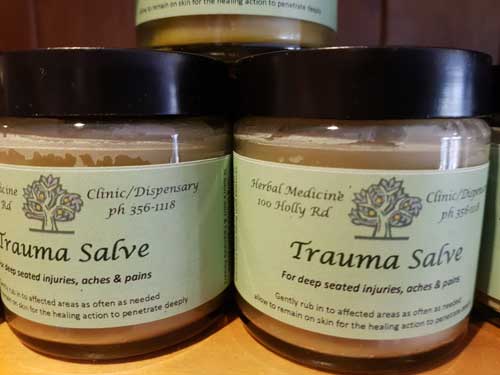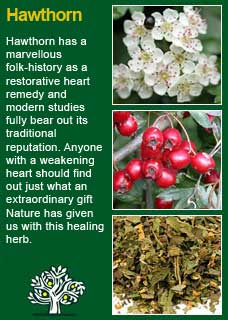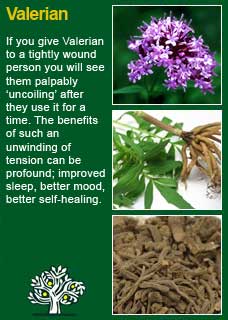
|
|
||||
| Our Pages ABOUT CONSTITUTIONAL MEDICINE
|
The bright yellow flowers, gathered from the beautiful, mountain-growing, long-lived, Arnica montana
There are many poisonous herbs that people have learned how to use as medicines. In olden times Arnica was used extensively for people with heart weaknesses. Swiss mountain folk, to ease sore and aching limbs, knew how to chew a small amount of Arnica leaf to ease their pain. Arnica has also been widely used as an external treatment to reduce pain and swelling in bruises and traumas and this is almost exclusively how it is still used today. Rudolph Weiss M.D writes 'Arnica is certainly one of the major medicinal plants, the comprehensive effects of which are not even properly appreciated in phytotherapy. The Commission E recommended it only for a number of topical indications (e.g. traumatic oedema, hematoma, dislocation, contusion) and for rheumatic myositis conditions in which Arnica is definitely able to achieve outstanding therapeutic results. Internal use, especially in indications such as coronary heart disease and for acute treatment of angina pectoris (which Goethe highly recommended) is not even mentioned in the Commission E monographs. One reason for this is that the commission completely over-rated the hypersensitivity of isolated patients to Arnica. Allergic reactions are generally common for Compositae plants but they are by no means a sufficient justification for contra-indication. This is especially true for Arnica, particularly when administered in very high doses since a variety of dose-dependent toxic effects ranging from dizziness, trembling, tachycardia and arrhythmia to collapse can occur. Arnica should, of course be very cautiously dosed or replaced with another drug in patients with known composite allergies. In the majority of cases, however, Arnica is extremely well tolerated when administered internally. We prescribe the drug very frequently, have never had a single case of acute adverse effects and have only heard reports of such effects in isolated cases. Anginal complaints are the most important indication for Arnica. Although Arnica can improve coronary circulation in much the same way as Hawthorn it is significantly different from Hawthorn. One of the most pronounced differences is Arnica's rapid-onset stimulatory effect. Arnica is therefore preferred for treatment of acute cardiac debility and angina pectoris. Hawthorn, on the other hand, is better suited for long-term treatment of coronary heart disease. This is also the case in the aging heart without manifest heart muscle insufficiency. Arnica can be considered for short-term relief of debility. Hawthorn should be used, however, if the objective of treatment is to relieve milder symptoms or to achieve a preventive effect. Weiss goes on to recommend doses of 5-10 drops of the tincture, or one cup of hot water over 2 tsps. of the flowers, steeped for 10 minutes and sipped slowly twice a day. For acute angina, he recommends 50 drops of Arnica tincture in a glass of lukewarm water, the solution sipped slowly over 15 minutes. He also says that good results can be obtained using a warm, wet Arnica compress over the heart region. H Felter, recommending doses of up to 10 drops of the concentrated tincture, writes 'Arnica is a greatly unappreciated medicine. It has a pronounced action upon the medulla and spinal cord which can be invoked to good advantage in states of depression. The keynote for arnica is spinal and vagal nerve enervation (a feeling of being drained of energy or vitality; fatigue) It should be brought into service when there is deficient nervous response, sluggish vascular power, and in almost all conditions in which prevails the triad of torpor, debility, and depressed function. In the advanced stages of exhausting diseases, where spinal innervation is poor, control over the sphincters lost, and there is feeble respiration due to central vagal impairment, it is a most important stimulant. It should be used when breathing can be carried on chiefly only by force of the will, and becomes weak and shallow when the patient drops into sleep; or when the sleeper awakens with a start on account of dyspnoea when automatic respiratory action alone is depended upon. Such a state occurs in the low stage of typhoid and other fevers, and in lobar pneumonia. In such conditions, Arnica is most useful and compares well with strychnine or atropine, or phosphorus, none of which are so safe as Arnica. Arnica will prove useful in the depression occasioned by extreme forms of diarrhoea and dysentery when the discharges escape control. In so-called typhoid pneumonia—which is but pneumonia with typhoid conditions— marked asthenia, feeble circulation, great depression, low muttering delirium, picking at the bed clothes, and dry tongue loaded with foul mucus, it is a most valuable treatment. Arnica is a stimulant of great power in anemia, with weak heart and capillary feebleness, and marked depression, diarrhoea and dropsy, but no inflammation. During mild forms of so-called chronic rheumatism, with cold skin and general debility it will stimulate the nervous system, restore normal warmth, re-establish restrained secretion, and thus relieve pain. In painful, bruised or subacute inflammatory disorders arising from injury, with marked lowering of nerve tone, muscular aching and chilly sensations, arnica is a remedy of power to give comfort and hasten resolution. When myalgia is caused by exposure, or when muscular soreness and pain are due to strain, overexertion, or sudden jars or blows, the administration of Arnica internally, in small doses of the specific medicine preferably, and the diluted tincture applied locally are among the most serviceable of measures. Arnica frequently relieves “heart-strain” due to exertion, overwork, or from long marching. It also benefits in the heart debility that follows severe strain, worry, or excitement. Dull aching pain in the praecordia (the area of the chest in front of and below the heart) due to lifting or when working against vibrating machinery, as in shoe making, is dissipated by small doses of Arnica. For lame back, backache and feelings of soreness and debility of the back, when accompanied by nervous depression and poor circulation, arnica is one of the most direct of remedies. Lumbago, when due to muscular strain or falls, is relieved by Arnica. Nervous headache of depression and debility frequently is relieved by Arnica. Should the patient to whom Arnica is administered appear to become nervously excited and restless, or show gastric irritability, its use should be discontinued' Johann Wolfgang von Goethe (1749-1832) was one of Europe's greatest scientists and influential thinkers. He credited Arnica with enabling him to carry on after no other treatment for his severe angina symptoms from his heart had helped. Convinced he would have died without it he wrote:
~ In a placebo-controlled, double-blind and randomised study of 89 patients with pronounced symptoms of chronic venous insufficiency, after three weeks, Arnica gel (containing 20% Arnica tincture) improved the feeling of heaviness in the legs compared with placebo, improved venous tone and reduced fluid retention. The effectiveness of Arnica in the treatment of symptoms associated with varicose veins is believed to be due to a protective effect against oedema. (Quartz P, Landgrebe W, Wohling D et al. Paper presented at the 6th Phytotherapy Congress, Berlin, Oct 5-7, 1995) ~ Arnica gel was more effective than placebo when applied externally for muscle ache in a clinical trial involving male volunteers. (Moog-Schulze JB: Tijdschr Integr Geneeskunde 9:105-112, 1993) ~ Extensive laboratory research into Arnica has yielded a number of mechanisms to explain its pronounced anti-inflammatory and pain-relieving effects: a) it has a direct effect on how certain white blood cells (polymorphonuclear neutrophils) are able to be damaged b) an energy enzyme (cAMP) is increased in the liver and in the white blood cells c) tissue breakdown enzymes are reduced in liver and white blood cells and d) a chemical involved in producing inflammatory responses is reduced (transcription factor NF-kappa B). (Lyb G et al: Pharm Pharmacol Lett 9(1):5-8, 1999) ~ The authors, titles and the 'where-and-when' published of over 100 further studies and articles on Arnica are listed in a PDF found here
Externally, Arnica must be used with care and a watchful eye if the skin is broken as it may provoke a rash that resembles an allergic reaction. Most herbal texts will strongly state that Arnica is a poisonous herb that must not be taken internally. I do not think that Arnica should be used to self-medicate and would strongly warn anyone against experimenting with this herb without the greatest of care but, to any herbalists or students of herbalism who are reading this, I will say that I disagree with this black and white prohibition and I say that, like our herbal forebears from many generations until now, we owe our understanding on how to use it safely to our patients who may suffer terribly from such awful symptoms as acute heart pain but who are unable, or for their own reasons unwilling, to take pharmaceutical drugs.
For some years now, against this proven and safe way of herbalism, there has been a rising tide of excessive caution and scare-mongering in many parts of the world. The same authorities that, not so long ago, decried herbal medicines as ineffectual, have now taken up a different adversarial position; that they are dangerous substances that should only be prescribed by Doctors, who of course have zero training in them. Unfortunately, the same unnecessary fear and worry has crept into many natural health websites and popular publications on herbs. Herbs that we have safely used for thousands of years, that have no reports of adverse reactions in the medical literature despite widespread use by millions of people, are suddenly described as contraindicated because of something that should have been seen as completely unimportant, or at the utmost a merely theoretical concern, such as a laboratory study on one of the herb's constituents to use an all too common example. I wonder sometimes if the writers of such articles feel that the herb will be more deserving of respect if it is thought to be a little bit dangerous, in other words more like a drug than something that has simply come out of the earth and been used by ordinary people for generations beyond count. There is just so much misinformation about herbal medicine on the internet now. Ludicrous claims and cautions abound in equal measure; it seems like one group are trying to make money out of the public whilst the other are busily trying to scare them off. I have to believe that the kind of reader who takes the time to read pages on herbs that are as extensive as this one is much less likely to be swayed by marketers or misinformers. I hope that you will keep your wits about you if you get conflicting opinions from people who have never really got to know these herbs, who have never worked with them, or learned how to use them safely and effectively. I want to remind you that the reason that herbs can never be patented and owned by any individual or corporation is because they are, and always will be, the People's medicine. They belong to all of us and it is my great hope in sharing this work that you will learn how to use them wisely for yourself, and the people you care for. Be safe, but do not be afraid.
We make our own Arnica tincture from organic dried flowers and use this frequently in external creams and compresses. I have had plenty of opportunity in practice both with patients and my own family to witness how Arnica-rich creams and salves can give great relief from pain, swelling and bruising. One recipe that works especially well is called Trauma Salve - the instructions etc. are written up here Whilst it is an expensive herb, and so must be used economically, I've also followed the practice of recommending a few Arnica flowers, along with such herbs as Chamomile or Rosemary, to be placed into the bath for people who are suffering terribly from general aches and pains and have seen that this has also given a great deal of fast relief. Arnica is a powerful herb that must be treated with great respect, after all it can be a lethal poison if used to excess but, knowing this, I will very carefully use Arnica internally in small and safe amounts when needed. In this way, I have personally been able to see that Arnica really is a remarkably powerful heart remedy which has given some tremendous and much needed benefits to some very ill people indeed. If you who are reading this are studying herbal medicine or you have your own reasons for why you need to know this potent herbal ally in more depth then I warmly encourage you to turn to the great laboratory of your own body and take some very small doses of the tea or tincture, just a sip of tea, just 1 or 2 drops of the tincture, just to the level that you can feel its 'action' i.e. the way the herb actually works within the body. So long as you do this with a quiet and open mind I think you will soon feel for yourself how, within a very short time frame, it causes a change in the state of the nerves. Speaking for myself, I can say that it quickly slows down my heart-beat and gives me a feeling of deep visceral relaxation, plus I note how it opens up my blood vessels and gives me a most pleasant feeling of warmth and a welcome and gentle quietening of my mind. I think that when the direct and quite immediate potency of a remedy is felt in such a way for yourself then fear gives way to understanding. Once it has been experienced directly then one does not need to be warned to treat it with great respect and care, but you may also feel how it may be exactly what can be needed by someone who is in the acute crisis of an inadequate circulation of blood to their heart. Any herbalist or student who would ever think of giving Arnica internally to another must surely take their own medicine first. Learn how strong it is (different preparations will have different ranges of action and safety) and know how to give it to others safely. For our own tincture that we make in our clinic, a 1:5 in 40% ethanol, I will typically give doses that will give the patient between 5 and 15 drops at a time. No more than 40 mls over the course of a month in doses that are taken twice a day. Often, less is more in herbal medicine, for treating a person for whom the primary indication for Arnica is that they are suffering from emotional wounds to their heart, a loss of trust, a betrayal, just small drop doses, combined with such herbs as Hawthorn, Motherwort and Lemon Balm, can work as a potent catalyst to help open the heart to the healing that is necessary to move on and let go the hurts of the past. Further to this, if you would like to learn more about the ancient art of pulse testing, a simple but powerful way to ask the intuitive intelligence of the body for its responses to a herb by feeling the pulse whilst giving a tiny dose by mouth, read here A very small and careful dose of Arnica may combine perfectly with generous quantities of Hawthorn for a weakened and struggling heart or perhaps with Valerian for someone who has become agitated and afraid.
Much of the information here about the traditional uses of Arnica is consistent with the model of thinking whereby one may treat problem A with plant B. There is value in this approach, especially in how it helps us pass on useful knowledge to one another, but it falls short in one vital area; and that is that people are not all cut from the same cloth! Something that works brilliantly for one person may do less for another -- why is this? Part of the reason is that people vary in their constitutions as to whether they are either hotter or cooler and, at the same time, either dryer or damper. This useful and rather fascinating subject is introduced further here Another big part of using the right herb when it is most needed comes from understanding the need to treat what is going wrong for the person that had led up to their getting a health condition. In this light, Arnica shows itself as a particularly helpful medicine when a nourishing action is needed in the 'cycle of healing' - more about that here
Please understand that I cannot advise you, including on products or dosage, without seeing you in person in my clinic but for ideas
on how you might find a good herbalist in your area read here |
|
|
© 2011 R.J.Whelan Ltd










